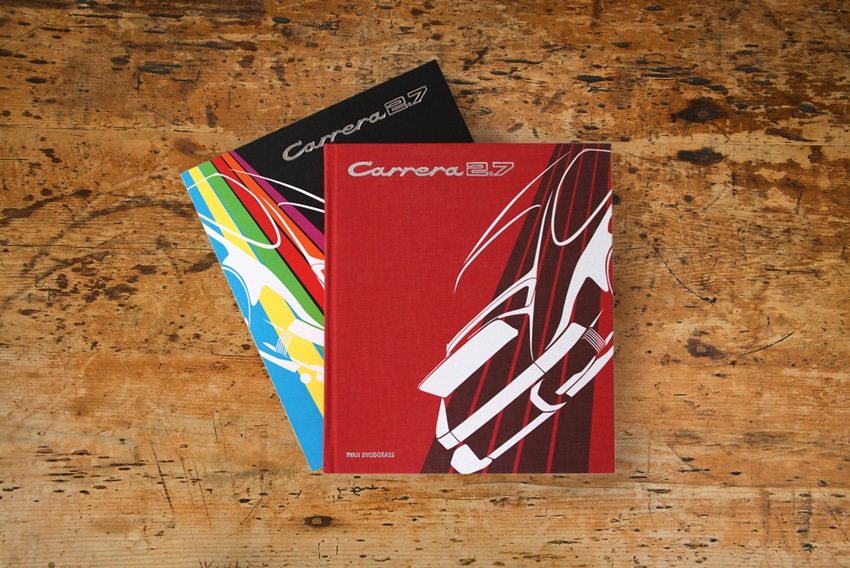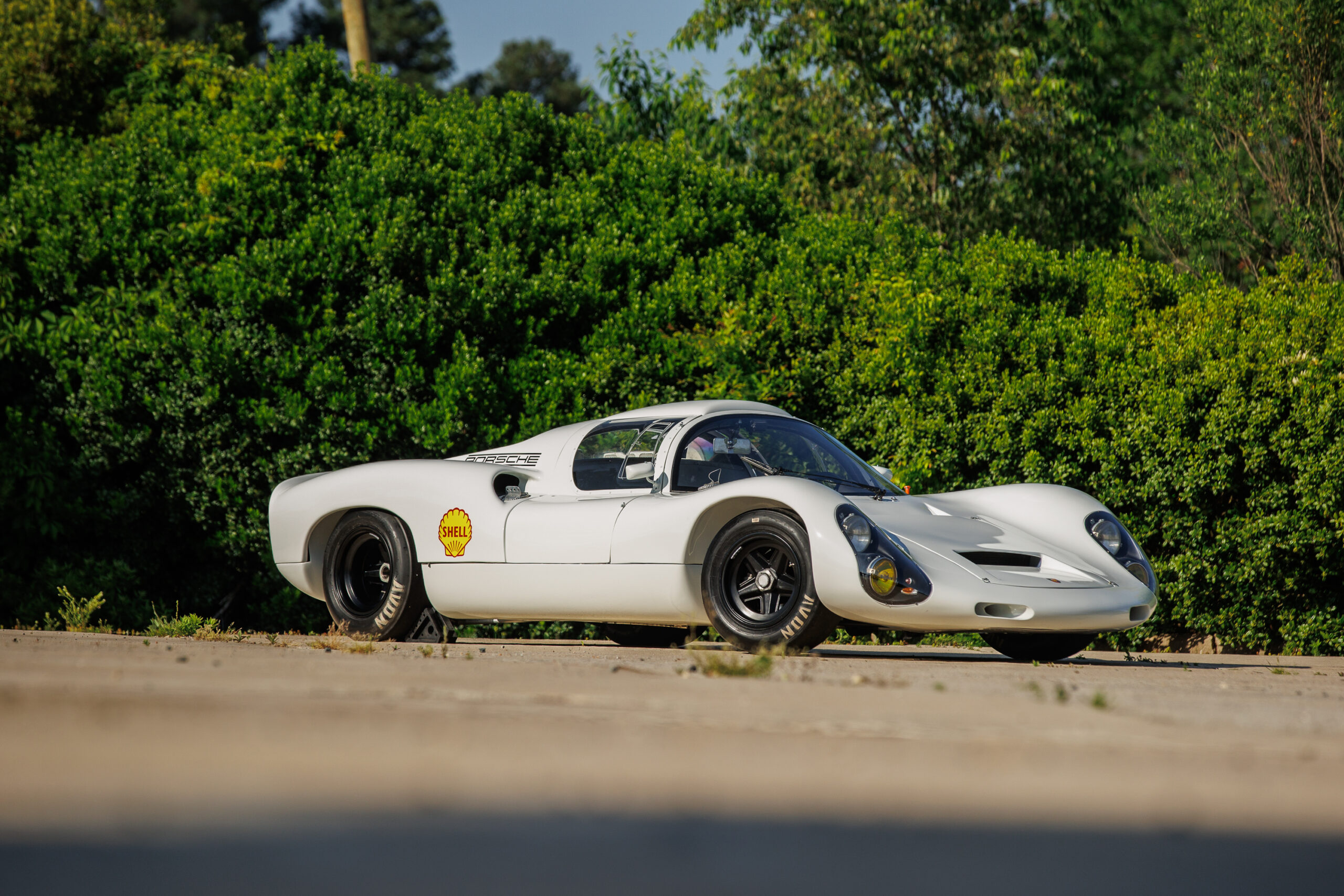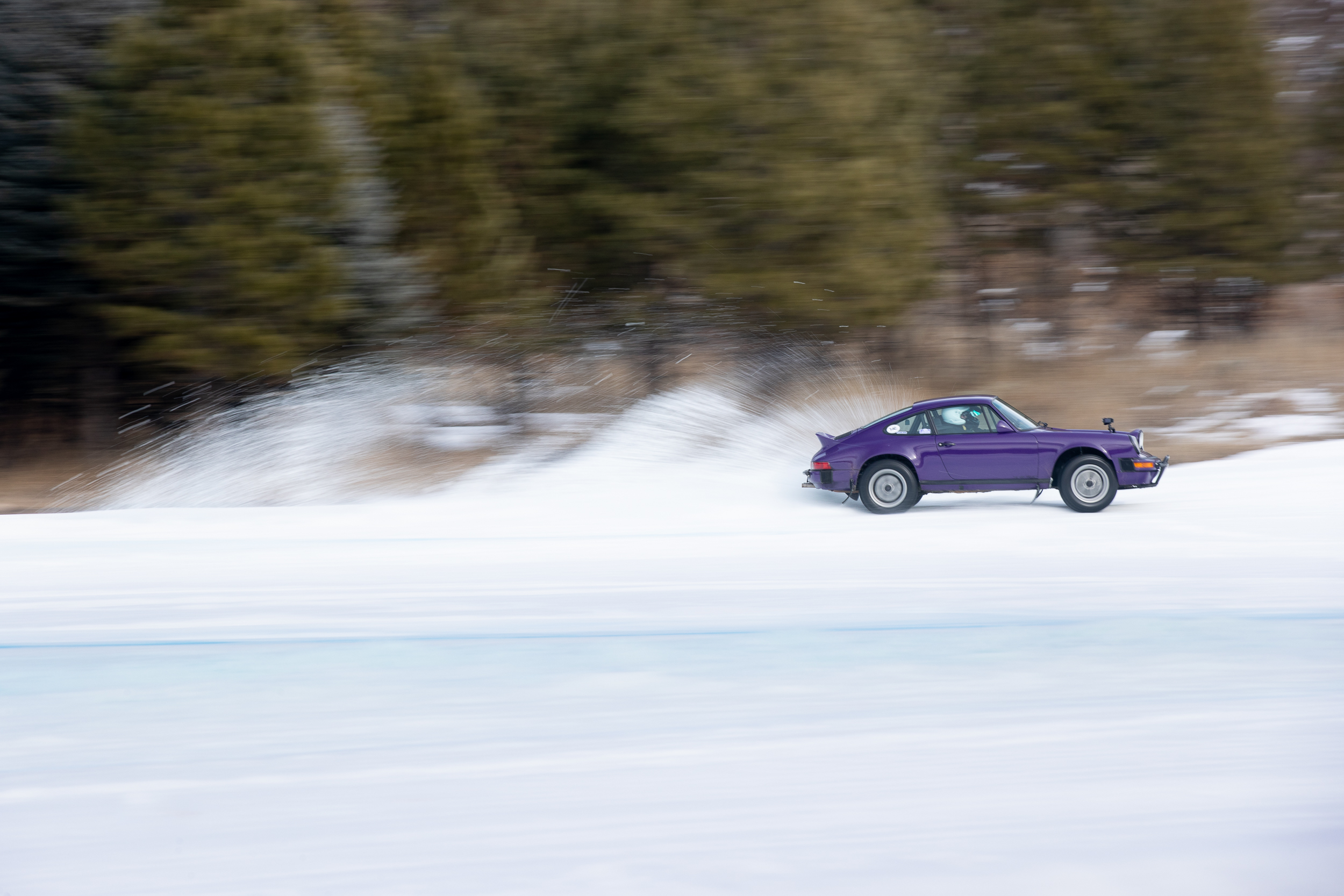Carrera 2.7 – The Soul of the Legendary Carrera 2.7 RS Lives on Within the Carrera 2.7 MFI
Ryan Snodgrass. 2015 Parabolica Press, Kirkland, WA. 406 pages. Slip case. (ISBN 978-0-9962682-8-8.)
Ryan Snodgrass’s new Carrera 2.7 is the logical and meticulously researched follow-up to the Carrera RS history written by Drs Thomas Gruber and Georg Konradsheim and first published in 1992. The earlier book encompassed 911 RS Carrera models from 1972 through 1992 because the RS designation was the focus of its interest. Snodgrass follows a similarly tight discipline, examining the 2.7-liter models with mechanical fuel injection, a series that began with the 1972 model year and ended in early 1975 with some 1976 “Sondermodell” or special variation cars. These cars share a mystique in the U.S. with the ’72/’73 RS 2.7 in that Porsche did not export them to the states either – because they were identical in their specification and in their non-compliance to early emissions standards. Motivated by his desire in recent years to find a good example of one of these cars for himself, he undertook what is now a bible on the 2.7s.
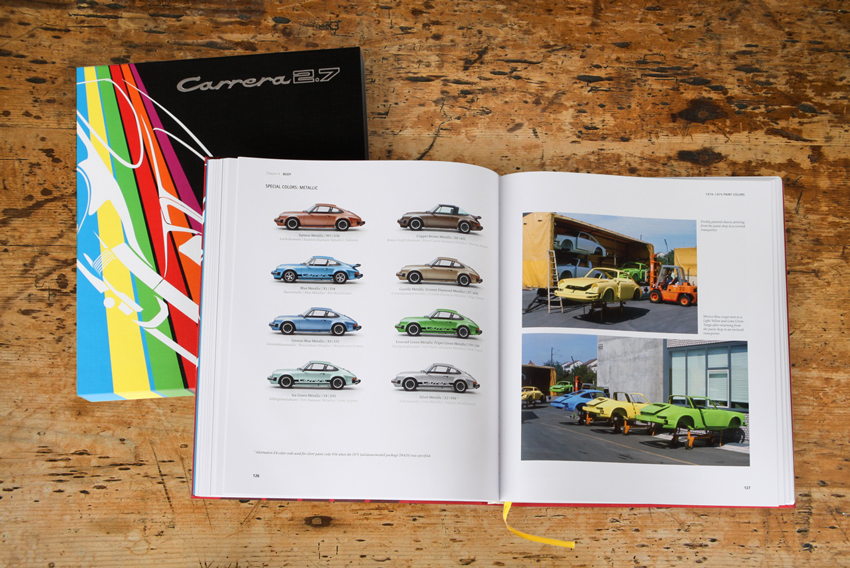
Pages are handsomely designed, and hundreds of not-seen-before black-and-white and color images share importance with diagrams or graphics or charts. Several pages show engine or chassis or body assembly as it only could have been witnessed and photographed in the early- and mid-1970s. Detailed part photos turn this book into an ultimate restoration guide as well as encyclopedic buyer’s reference.
The photos deserve special mention because it is easy to completely lose count of how many were specially commissioned for this book. A common complaint from European readers of American-produced books on Porsche is that U.S. versions of 911s are different, which provide inaccurate references to continental readers. Snodgrass enlisted photographers not only in the U.S. but also in the U.K. and Europe to provide excellent images. What’s more, the thorough racing coverage in chapter 7 shows countless photos of these cars sideways, tricycling, or fully airborne. The captions – for all the pictures – are more than just labels and some are downright entertaining.
Find this book at: www.ParabolicaPress.com
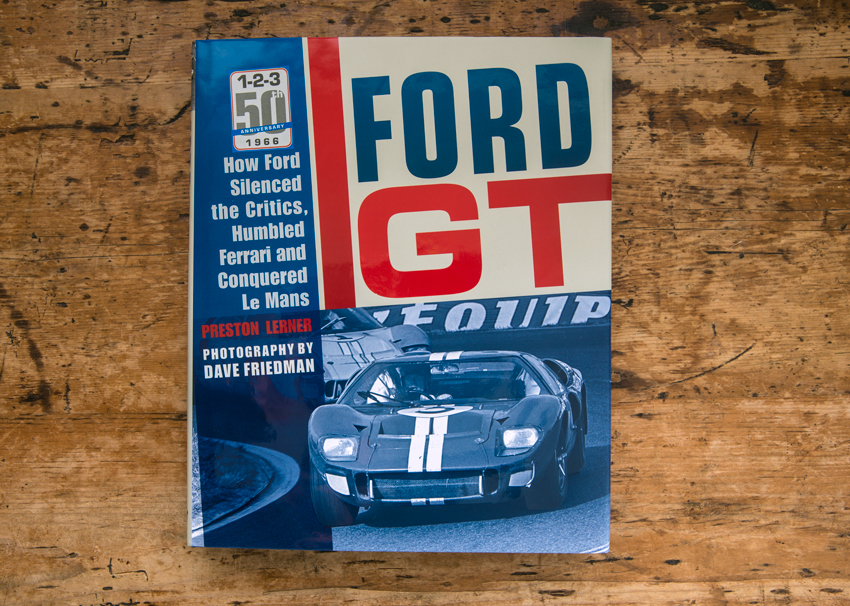
Ford GT: How Ford Silenced the Critics, Humbled Ferrari and Conquered Le Mans
Preston Lerner, with photography by Dave Friedman. 2015 Motorbooks. 224p. ISBN: 978-0-7603-4787-4.
Just in time for the 50th anniversary of Ford’s first win at Le Mans in 1966, Preston Lerner and Dave Friedman have delivered a thoroughly researched history of what it took to get there. Friedman was there – as his photos prove – and as Shelby staff photographer his visual records are fascinating and instructive. Less well known is that Dave, under Carroll Shelby’s urging, interviewed many of the people involved in the Cobra and GT program who have since died. These first-person accounts bring immediacy and intimacy to Lerner’s text. Preston, a talented writer and eminently trustworthy historian, not only brings new light to familiar elements of the story but he also addresses and answers many of the rumors and legends from Ford’s effort at Le Mans: What caused Enzo Ferrari to go back on his offer to sell his company to Ford? Did Ford really fly windshields to France on passenger flights? How did the “squadron finish” in 1966 happen and what were its effects? What did it all cost?
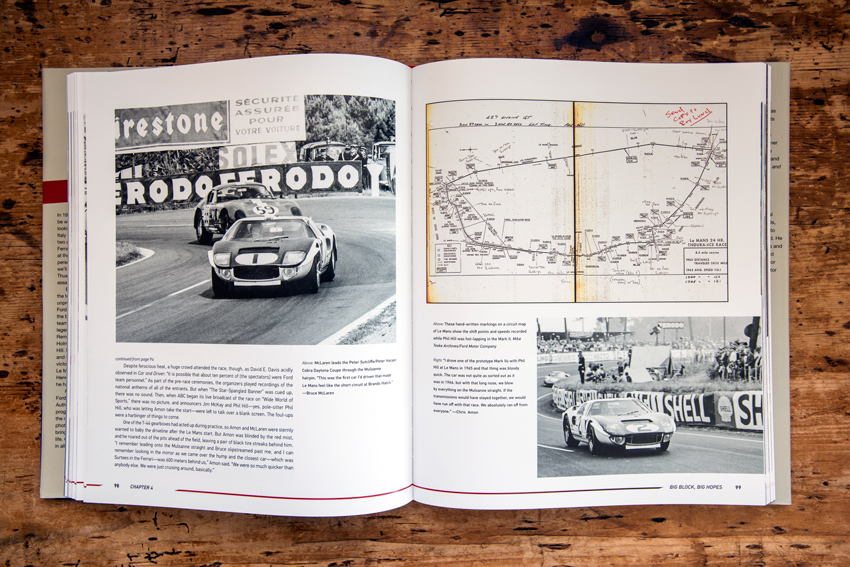
While another recent telling of this history reads rather like a motion picture awaiting casting and cameras, this Lerner/Friedman book is the gripping documentary. As such, it seems more credible as well, as this book comes with endnotes that provide attribution to every significant old and new revelation. Ford plans to return to Le Mans and to endurance racing next year with its 2016 Ford GT, a new story that Lerner covers in the epilogue.
Find this book at: www.Amazon.com
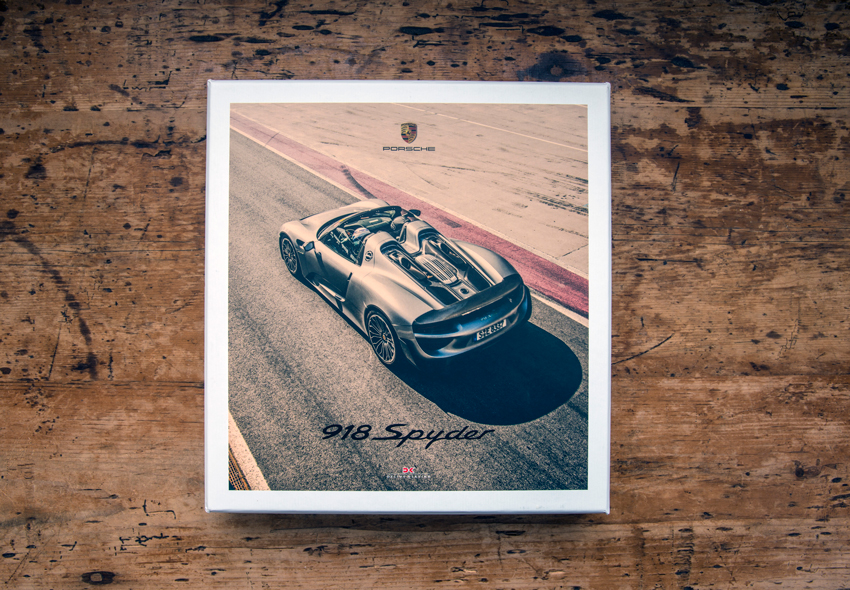
Porsche 918 Spyder
Jürgen Pander. 2014 Delius Klasing. 216p. ISBN: 978-3-667-10037-5. English, German. Boxed. Numbered. Includes Porsche 918 Spyder fact book; Porsche 918 Spyder Birth of a Legend. With rubber band.
This book is a visual rhapsody. Or maybe even a photographic orgy. Even without precisely counting the images, it’s a safe bet there are as many photos as there are words of text in this beautifully produced hard-cover project.
In fact the limited reading material comes in two soft-cover supplements included in the box, Porsche 918 Spyder Fact Book, and Porsche 918 Spyder Birth of a Legend, written in German and English. Together these three elements give you entertainment and information for the eyes and the mind.

If you hope to find an in depth history of the 918 concept, engineering, design, development, and production, that will require another author in a different approach. If you want a visually stunning celebration of Porsche’s highest-technology series (limited) production car ever, this is a coffee table must have.
Find this book at: www.Amazon.com

The Winner’s Book: A Comprehensive Listing of Motor Racing Events 1895-2009
James O’Keefe. 2010 Racemaker Press. 576p.
Where Janos Wimpffen’s Time and Two Seats (reviewed in November 2015 Road Scholars Magazine) covers endurance racing in great detail, James O’Keefe was much more ambitious. Chapter 1 begins with Grand Prix information and race results. Chapter 2 covers “American Championship Races” from American Automobile Association-sanctioned events through USAC, CART, and IRL events. The next three chapters examine major national “formula” events, then “second rank” and “third rank” formula competitions. Sports cars arrive in chapter six, covering events from 1905 to ALMS and Gran-Am races through 2009. Stock cars, that is NASCAR, USAC, IMCA, MARC, ARCA, ASA, and even NASCAR truck results occupy the pages of chapter 7. Chapter 8 covers Trans-Am, IROC, and Touring Car races, and chapter 9 finishes with motorcycles, starting with European Grand Prix events in 1911 and proceeding through Moto GP in 2009.

Within each chapter, O’Keefe provides lists of champions by year, specifications of the car by year and by series, and endnotes providing additional clarification of sometimes confusing results. Race results list race date, venue, nearest city, number of laps and miles of the race, winner, car, finishing time and average speed, and occasionally an additional note if it was a championship contest.
Racemaker presents this enormity of data in an extremely easy-reading format, alternating lines in white or pale-colored background that changes with each chapter. There are fewer photos than in Wimpffen’s two volumes, and briefer text starts each chapter. However, if you need to know who won the very first Voiturette Cup race after World War I (it was Ernest Friderich, driving a Bugatti), or final non AAA-sanctioned event in 1941 before racing ended in America during World War II (it was Ed Barnett driving a Hood/Riley in the September 1, 1941 Oakland (CA) 500 – he averaged 75.84 over 6 hours 35 minutes 35 seconds) or who took the final CART sanctioned race (Sebastien Bourdais in the Mexico City GP, in a Panoz Cosworth on November 7, 2007) or the 1957 FIA World Sports Car Makes title (Ferrari) or…or…or….
Smaller in format, and considerably less in price than trying to locate Wimpffen’s classic reference, this book is an essential reference for racing enthusiasts.
Find this book at www.Racemaker.com
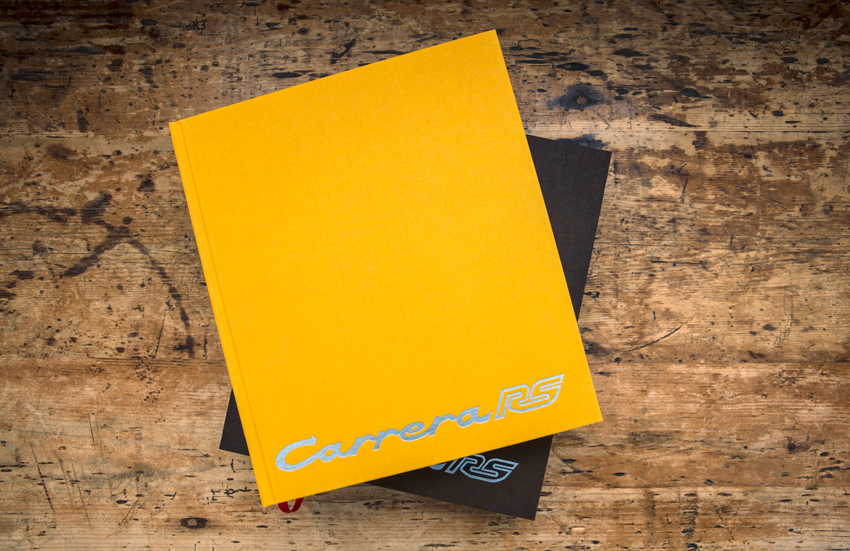
Carrera RS
Dr. Thomas Gruber, Dr. Georg Konradsheim. 2015 T.A.G. Verlag. 434p. German or English language editions. Numbered. Slipcase.
In 1992, Thomas Gruber and Georg Konradsheim established a benchmark in marque/single model history with the first edition of Carrera RS. At 256 pages, it seemed to examine every element of the design, development, and production of the 1972/1973 Porsche 911 Carrera RS 2.7. The authors also deemed the 1991 911 Carrera 2 RS a worthy successor and the original book covered that model as well.
This revised, expanded second edition begins as the first one did with a look back at the Mexican Carrera Panamericana road race that gave the RS 2.7 its name, while stopping along the way to look at the 904 Carrera GTS and 906 Carrera 6, and even the 911 R and, curiously, the 914/916 models. Adding photos is a luxury of the additional 178 pages. Chapter order changes in the new edition, with Engineering preceding Production in the first edition and following it in the second, most likely because in the new book, the chapter grows from 30 pages to 43.
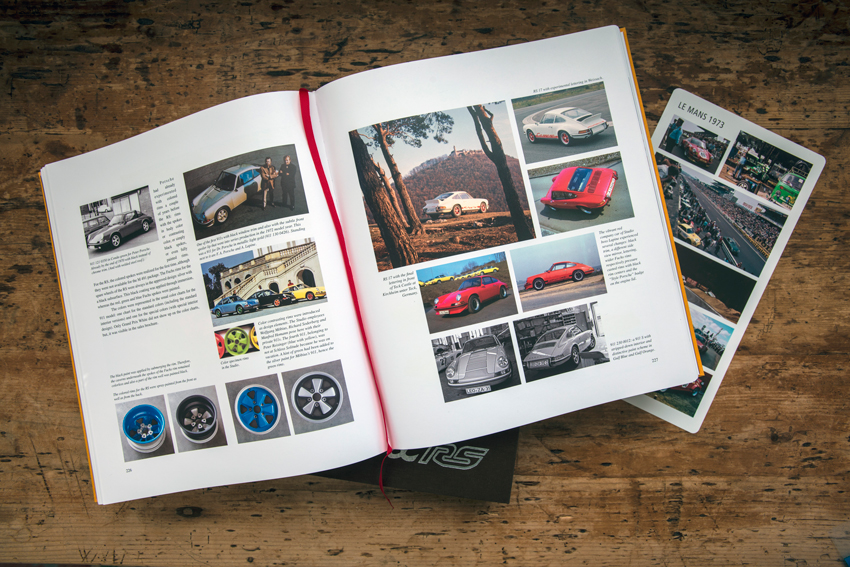
Naturally, every chapter grew in length, as a result of the discovery of additional information, of additional print resources, of additional live ones. The acknowledgements for the new edition include eight more names than the previous book. A considerable amount of new studio-type photography carefully examines individual vehicles (similar to Ryan Snodgrass’s Carrera 2.7, reviewed above). And for this newest version, Gruber and Konradsheim have removed the 964 variants.
The timing likely is perfect for this new edition. These cars, instantly admired in the States as soon as buyers here learned of them and that they were not available, have increased astonishingly in value in the past five years, with exceptional examples – RH (homologation) version or RSR models reaching respectable seven-figure prices in auctions and private sales.
Readers hoping to find a first edition of Carrera RS are encountering eBay prices approaching $1,500. That makes this new, bigger, broader edition a bargain at a third of that price.
Find this book at: www.TAG-Books.com

